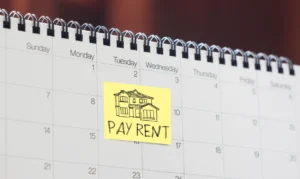
The Maintenance Secret Small Multifamily and Single-Family Rentals Share
While the average unit count for a Multifamily property continues to rise, well over 40% of Multifamily units are in smaller properties. There are real differences in how you lease, market, and manage the resident experience, but when it comes to maintenance, multifamily portfolios with small properties and single-family rentals are almost identical because they face similar challenges.
That’s why savvy SFR operators are looking at the multifamily sector to see what best practices they can apply to their own companies
The 50-Unit Line
There’s a dividing line in multifamily right around the 50-unit mark. Above that threshold, PMCs usually have dedicated on-site maintenance teams that can efficiently handle everything from broken heaters to clogged sinks. Someone’s there full-time, tools in hand, ready to handle whatever breaks.
But multifamily companies with fewer than 50 units often don’t have that luxury. That’s where small multifamily starts looking a lot like single-family rental portfolios because they are both trying to maintain properties efficiently without someone stationed at each location.
What Single-Family Operators Figured Out
Single-family rental companies know that when you’ve got homes scattered across a broad metro area, you can’t afford to have a maintenance person sitting at each property. The math just doesn’t work. That’s why they have built centralized maintenance teams that serve entire regions with one crew covering dozens, or even sometimes hundreds, of properties.
They invested in systems to make it work: smart dispatching, mobile technology, preventive maintenance schedules that actually prevent things. The payoff has been real: lower costs, faster response times, better visibility into what’s happening in the field.
Small Multifamily’s Opportunity
Now look at a small multifamily operator with three 50-unit buildings spread across a city. Traditionally, owners might cobble together some version of an on-site maintenance team, such as a part-timer who splits time between properties, or maybe a handyman who shows up when called.
But If they took a different view, they could be running the same playbook that’s working in single-family: centralized maintenance across the metro area functioning as a well-managed team serving all their properties, whether those properties are 50-unit apartment buildings or scattered single-family homes.
This is a good idea because property management companies and owners need visibility into what’s happening across their entire portfolio, even if it’s small. They need to route work orders intelligently, not just send whoever’s available to whatever property called first, and they need to track performance so you know if response times are slipping or costs are creeping up.
Why This Matters Now
Property management companies running both small multifamily and single-family portfolios are starting to see this connection. Instead of creating separate maintenance operations for each asset class, they’re building unified systems that work across both.
The technology that made centralized maintenance viable for single-family, as well as the lessons learned about dispatching and scheduling and vendor management, are interchangeable between small multifamily and SFR portfolios. Because at the end of the day, a leaking faucet in a duplex needs the same response as a leaking faucet in a single-family home three blocks away.
The companies figuring this out aren’t just saving money. They’re building operations that can scale across different property types without starting from scratch each time. Sometimes the biggest opportunities come from recognizing that the walls between different parts of the residential property industry aren’t as solid as we think.
Source: Multifamily Insiders













 Accessibility
Accessibility